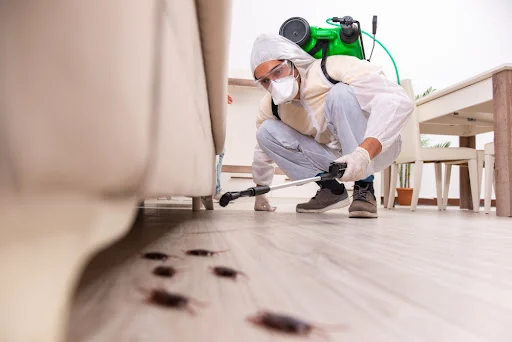Pests are sneaky. One moment, everything seems fine—then suddenly you’re sharing your home with uninvited guests. Whether it’s rodents, roaches, or termites, catching the problem early can save you time, money, and stress. The key? Knowing what to look for. Here are 10 common warning signs of a pest infestation—so you can stop it before it turns into a full-blown invasion.
1. Droppings and Urine Stains
Let’s start with the most obvious: droppings. If you notice tiny, dark pellets around your kitchen, pantry, or baseboards, you may be dealing with rodents or cockroaches. Rodents often leave behind urine stains as well, which can emit a strong, musty smell. These signs usually indicate that pests are active and nearby.
2. Scratching or Scurrying Noises
Hearing noises at night? That scratching in the walls, ceiling, or under the floorboards may not be your imagination. Rodents, squirrels, raccoons, and even insects like termites can make unsettling noises as they move or chew through materials in your home.
3. Strange or Foul Odors
Unexplained odors could mean something unwanted is living—or dying—in your walls. Rodents have a distinct musky smell, while roaches emit an oily or greasy odor. Dead pests can cause even worse smells, especially if they’re in hidden areas like crawl spaces or behind appliances.
4. Chewed Wires or Gnaw Marks
If you find wires, furniture, or food packaging with bite marks, you likely have a rodent problem. Rats and mice constantly gnaw to keep their teeth in check. Unfortunately, their chewing habits can lead to serious damage, including electrical fires from frayed wiring.
5. Grease Trails or Smudge Marks
Rodents tend to follow the same paths repeatedly. As they travel along baseboards or walls, the oils from their fur can leave behind greasy trails or smudge marks. These are often most noticeable in low-light areas like basements or behind appliances.
6. Damaged Plants or Holes in the Yard
Pests don’t just affect the inside of your home. If your garden or lawn looks like something’s been digging around, you might have gophers, moles, or even insects like grubs. Chewed leaves and damaged roots can also be signs of caterpillars or beetles.
7. Nests or Webbing
Rodents build nests from paper, fabric, and insulation, usually hidden in quiet areas like attics or behind walls. Insects like spiders, moths, or even wasps may leave behind webs or cocoons. If you’re finding these signs, there’s likely a breeding population nearby.
8. Insect Body Parts or Shells
Cockroaches and beetles shed their skins or die in out-of-sight areas. If you’re finding insect parts—like wings, shells, or exoskeletons—along window sills or in cabinets, it’s time to investigate further. These signs often go unnoticed but are a red flag for infestation.
9. Unexplained Bites or Skin Irritation
If you or your pets are waking up with bites or itchy welts, there could be fleas, bed bugs, or mites in your home. These pests are masters at hiding during the day and feeding at night. One bite might be a fluke—multiple bites could signal a larger issue.
10. Seeing the Pests Themselves
This might sound obvious, but seeing pests—especially during daylight—is a major warning sign. Many pests are nocturnal and stay hidden, so spotting them out and about may mean the population has grown large enough to push them out of hiding.
What Should You Do If You Notice These Signs?
If you’ve noticed one or more of these warning signs, don’t ignore them. Pests breed quickly and problems escalate fast. The best first step is to call a licensed pest control professional. They’ll inspect your home, identify the problem, and recommend a treatment plan tailored to your situation.
Prevent Now, Save Later
Many homeowners wait until there’s a full-blown infestation before taking action. But proactive pest control—like regular inspections, sealing up entry points, and proper sanitation—can prevent problems before they start. It’s a small investment that protects your home, your health, and your peace of mind. We recommend pest control temecula.

